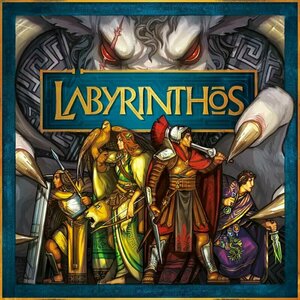
PAC-MAN Pop
Games and Entertainment
App
PAC-MAN Pop! is the only game that combines classic arcade action with hours of addictive bubble...

Pirates War: Dice Battle Arena
Games and Stickers
App
Join the FIGHT in Pirates War to become the next PIRATE KING! Get your skills ready and start...
Lee KM Pallatina (951 KP) rated the Xbox 360 version of Bully: Scholarship Edition in Video Games
Feb 10, 2021
In stereotypical fashion the students are divided into groups, nerds, preppies, jocks etc
The game follows newcomer Jimmy Hopkins, an aggravated teenager with an attitude problem who's about to discover what its like to be on the receiving end.
Filled with errands from both teachers and students & classes to pass like maths, geography, science & Gym and a GTA style gameplay and control system, bully has overtook its original canis canem edit pre gen console release with new characters and additional missions, with an array of costumes & weapons aswell as a perfectly annoying antagonist named Gary and a beautiful ending.
Bully created a gaming cult.
developed by Rockstar Vancouver and published by Rockstar Games
released on 17 October 2006 on PS2
Developer: Rockstar Vancouver
Composer: Shawn Lee
Writer(s): Dan Houser; Jacob Krarup
Platforms: Android, PlayStation 2, PlayStation 4, Xbox 360, PlayStation 3, iOS, Microsoft Windows
Purple Phoenix Games (2266 KP) rated Tales of Evil in Tabletop Games
Oct 1, 2020
Tales of Evil is a cooperative, horror, storytelling, adventure game that uses a unique new “Fusion System” throughout the game. Players will be taking on personas of kids from the 1980s who belong to a club named “Pizza & Investigation.” I do not wish to reveal too much in this review, so I will be covering this as a Solo Chronicles using one character going through the introductory tutorial mission.
DISCLAIMER: We are using the Kickstarter Deluxe version of the game. We do have the expansions from the KS campaign, but will not be using those for this review. Also, we do not intend to cover every single rule included in the rule book, but will describe the overall game flow and major rule set so that our readers may get a sense of how the game plays. For more in depth rules, you may purchase a copy from the publisher directly or from your FLGS. -T
To setup, well, just follow the setup instructions in the rulebook. There’s too much for me to explain here. For one character playing the tutorial scenario, the game setup should look similar to what is pictured below. Maybe. The rulebook does not specifically state WHERE each item should be placed, so players will have ultimate freedom to setup items where they see fit to be most efficient for themselves.
Players in Tales of Evil will have no real “turn structure” as most games do, because all players will be adventuring together as a group. So characters will be moving as a group and never splitting the party (RPGers breathe a sigh of relief… maybe). However, as with many adventure games of this style, once players explore into new areas certain markers will placed on the board (Clue, Darkness, Mystery, Search, etc). These markers signify different actions that can be taken, or entrances to areas that are blocked or found, or something that could be traced from one area to another. The leader of the group for the time being is in possession of the Walkie-Talkie and will make all final decisions for the group after any discussion (for solo players, it is just a nice prop). Usually searching for items will result in a card draw and upon the card will be a test to pass using the stats on the player character mat to roll dice for successes. Of course, the other side of that are horrible losses as well.
Players will be traipsing through the area and reading passages from two actual books: the Story Book and the Event Book. Most of the action happens in the Story Book and it will guide players through the story and once choices are made or tests succeeded/failed, the book will instruct players what to do next and to which section to turn to further the story (a la Tales of the Arabian Nights). The game continues in this fashion until the story ends with victory or defeat.
Components. Why yes, that is a real spoon in the photo above. No, it does not come with the game. I will explain in a bit. The components in this game are great. Each character has their own mat for organization, action cards, equipment cards, and status cards that dictate the difficulty of the game and how the character degrades over time in the horror-filled mission. Some components are even glow-in-the-dark! A nice touch, but certainly unnecessary. I find everything to be wonderful quality, even the cards that are kind of polarizing on the KS comments are nice (people are complaining that they are not linen-finished, but I believe the publisher made the right call to make them matte finished if the linen obscured the look and art on them). Thumbs up for components from me.
I wanted to wait until my final thoughts to explain the whole “Fusion System” that is in play here. Tales of Evil uses the catchphrase, “You will get into the game and the game will get into you!” Now, I’m not sure exactly how this game is getting into me, but I’m certainly digging the game and this Fusion System. You see, some cards (in the tutorial, remember, so I’m not really giving much away here) will give players 60 seconds to grab a kitchen spoon for some benefit and a debilitation if they are unable to find one – hence the spoon in my photos. Another card relies on the character (and also then the player) removing their shoes. Still yet another deals with fire or people smoking in the vicinity. If there is fire nearby in real life, it affects the effects of the card drawn. It’s ingenious and I love every little bit of it! I can’t wait to see how the Fusion System will work in this game more and how it can be applied to other games in the future.
All in all I love everything about Tales of Evil. The setting is great, the Pizza & Investigation kids are awesome, and the game itself is incredibly engaging and makes you really think about the choices you make within. Perhaps the haunting feeling of doubting some choices is how the game gets into you, because I did find myself wondering what would have happened had I chosen a different course for some instances. I am very drawn to this game and I want to tackle all of the scenarios. Even solo! And another great thing about Tales of Evil is the fact that a player (or players) can join a game already in progress! So if I am exploring solo and my wife decides she wants to hop in, she just grabs a character mat, sets up the character, and dives right in with me. I LOVE games like that. So versatile.
While I should probably stop gushing at this point I just can’t. This game is so much fun and worth every penny spent on it. I implore you, if you are a fan of exploration adventure games in this vein you definitely need to snatch up a copy whenever you see one. And if you love it as much as I do let me know. We can swap adventure stories.
Oh did I mention the designer is even created a way for us normies to create our own scenarios and upload them to other Tales of Evil players? Yeah, I’m fascinated by that as well…

Evolution: Battle for Utopia – Sci-fi RPG in Space
Games and Entertainment
App
Become the captain of an interstellar expedition! After a star ship crash, you’ve landed on a...

Mortal Kombat (1995)
Movie Watch
For nine generations an evil sorcerer has been victorious in hand-to-hand battle against his mortal...
Purple Phoenix Games (2266 KP) rated Labyrinthos in Tabletop Games
Feb 10, 2021
Disclaimer: I do not intend to rehash the entire rulebook in this review, but rather provide an overview of the rules and game flow. -L
Labyrinthos is a game of action and adventure in which players are exploring the famed Labyrinth of Daedalus, searching for the 4 secret keys that will let them escape! All this while avoiding traps, their competitors, and the deadly Minotaur who seemingly lurks around every corner. To setup for a game, create the Labyrinth as described in the rules – in the end it will be a 7×7 tile grid. Each player receives a Player Board, Standee, 4 Desperation cards, 7 Action tokens (3 Hand tokens and 4 Feet tokens for the first turn). The remaining Desperation cards and tokens are placed to the side of the play area, along with the Key tokens. Select a starting player, and the game is ready to begin!
Over a series of rounds, players will take turns performing various actions, exploring the Labyrinth, searching for Keys, and avoiding the Minotaur. On your turn, you will be spending Action tokens to perform various actions, like: Move (to an adjacent tile), Explore (flip over an adjacent face-down tile and move to it), Discover Key (gain the corresponding Key token to your Player board), Desperate Action (play a Desperation card), and a handful of other actions. Each action has a token cost associated with it, and you must pay it in order to perform the action. Each different Player Board also has a unique Special Ability that is active during the game. Once you have taken as many actions as you can/want to take, you will return any unused Action tokens to the supply, and then choose a combination of 7 new Action tokens to be used on your next turn. Then, you will refresh your hand – drawing or discarding Desperation cards so your hand limit is 4 minus the number of Key tokens you possess.
The final step of your turn is to roll the Minotaur die and resolve his movement/actions. The movement of the Minotaur is similar to the movement rules of players, and some results on the Minotaur die activate special abilities. If the Minotaur ever enters a tile occupied by a player, he immediately Attacks! The controlling player rolls the Blood die, and the attacked hero gains that number of Wounds to their Player Board. A Wound on your Player Board will cover one of your turn actions, prohibiting you from performing that action until you spend Action tokens to Heal. Certain tiles of the Maze have special symbols that will immediately affect the gameplay. For example, any time a player moves onto a Trap tile, they immediately take a Wound. When a player is on a Hide tile, they cannot be Attacked by the Minotaur. Play continues in this fashion, alternating turns, until a player has collected all 4 Key tokens and made their way back to the starting Door tile. That player has successfully escaped, and all others remain trapped in the Labyrinth!
I know that may seem like a lot, but the gameplay itself is actually pretty streamlined and intuitive. The action descriptions on the Player Boards are clear and concise, acting as a player reference sheet in a way. I appreciate the Player Boards SO much because it keeps me from having to continually refer to the rulebook for any action questions. The action options themselves are simple to understand and perform, but the strategy required for overall success is trickier to master. This truly is an exploration game – the 7×7 grid is created anew every game, and chances are you will never play with the same grid layout twice. The Key tiles could be anywhere, and you have to try to get to them before your opponents. The different tile symbols offer some risk/reward decisions. Do you risk turning over an undiscovered tile in hopes that it gets you across this gap? It could be a Trap! Or it could be a Secret Passage that allows you to move elsewhere. You’ll never know if you don’t try it!
I also really like the mechanic of the Minotaur in this game. At the end of your turn, you roll the Minotaur die and resolve it. That means the Minotaur is essentially controlled by all players. It becomes a sort of tug-of-war, if you will, as players try to get the Minotaur to attack opponents, while hopefully also staying out of his range for the next player’s turn. Another neat thing about Labyrinthos is that when you collect a Key token, it actually provides you with an action and is added to your Player Board, covering an existing action. Through the use of actions and Desperation cards, you could be able to move Keys around on your Player Board too. Maybe its initial placement doesn’t fit the situation anymore, and you need that covered power back! The opportunities to strategize with your actions are endless, and that keeps the gameplay engaging. One last cool thing I want to mention is the selection of new Action tokens at the end of each turn. Certain actions require Hand, Feet, or both types of tokens, and having the ability to choose the combination of those for yourself feels pretty powerful. It could also quickly backfire, if suddenly you find yourself needing Feet tokens, but you only have Hands left! It’s another layer to the strategy, and it helps up the excitement of play.
Components. The components of this game are great. The maze tiles are nice and sturdy, the symbolism clean and clear. The Desperation cards have some cool flavor text, and their actions are straightforward. All of the Standees, tokens, and dice are good quality that will hold up to lots of handling. All in all, great production quality!
I am extremely happy that I decided to back Labyrinthos on Kickstarter. For being a seemingly simple game of maze exploration and movement, there is definitely a lot more to it than meets the eye. Players have to manage resources and plan ahead for what they need in subsequent turns. Desperation cards can affect the gameplay, and can sometimes even be used during an opponent’s turn. The ability of Key tokens to cover existing abilities really makes players think about what their strategy is moving forward. All of these aspects put into one game make for a fun and immersive experience. Purple Phoenix Games gives it an a-maze-ing 10 / 12. Also, special shout-out to the all-female team behind this great game!! It is really cool to see how women are moving up in the gaming industry, and becoming prominent players across game design, art, production, and media content realms within this hobby. Kudos to you ladies! I am very much looking forward to supporting your games in the future!

Beach Buggy Racing
Games and Entertainment
App
Drive into an action-packed, surprise-filled world of off-road kart racing mayhem! Race against a...

Tomb Raider I
Games
App
LARA’S BACK FOR MORE CLASSIC ACTION! We’re going back to where it all began for one of the...

Shadow Fight Battle Warriors 2
Games and Entertainment
App
Shadow Fight Battle: Super Hero Warriors Legend - The popular VS fighting game on Apple Store. ...


